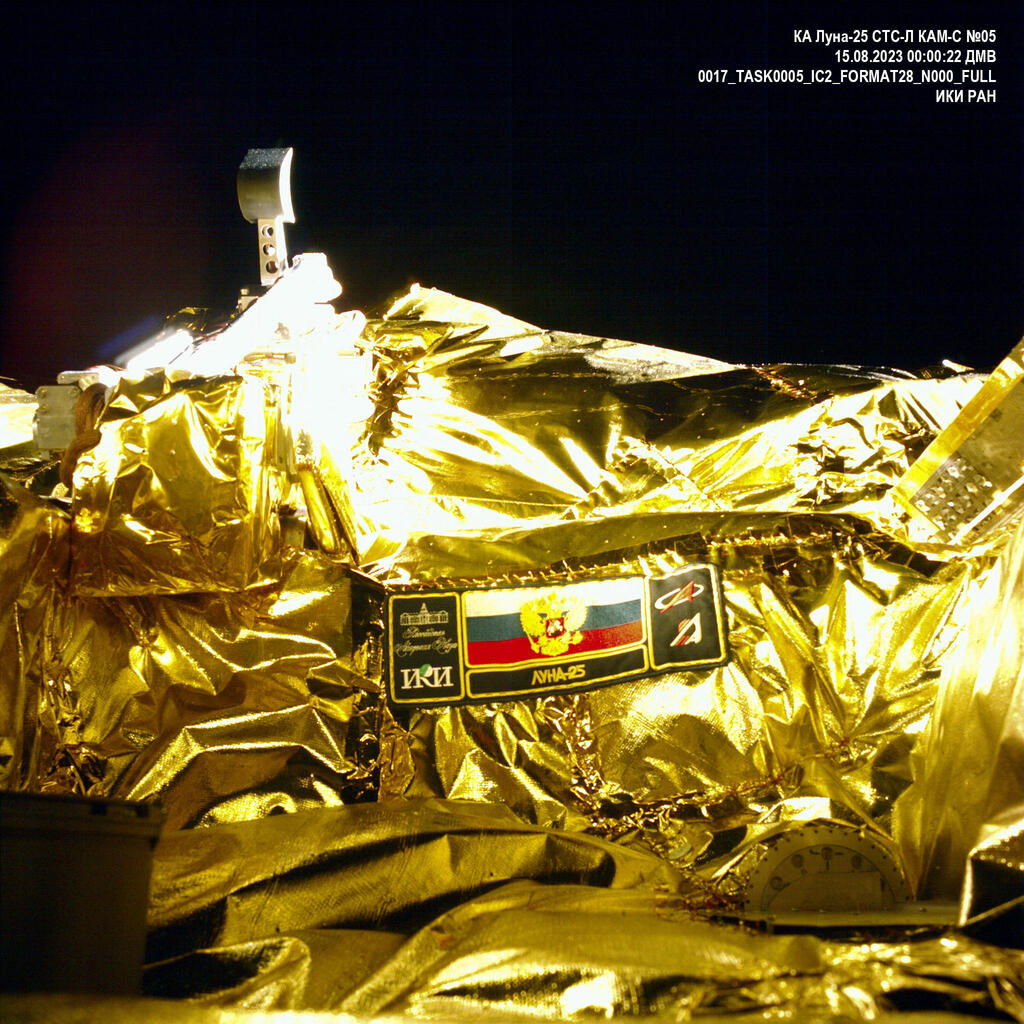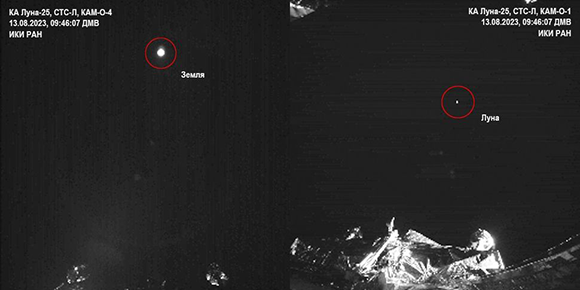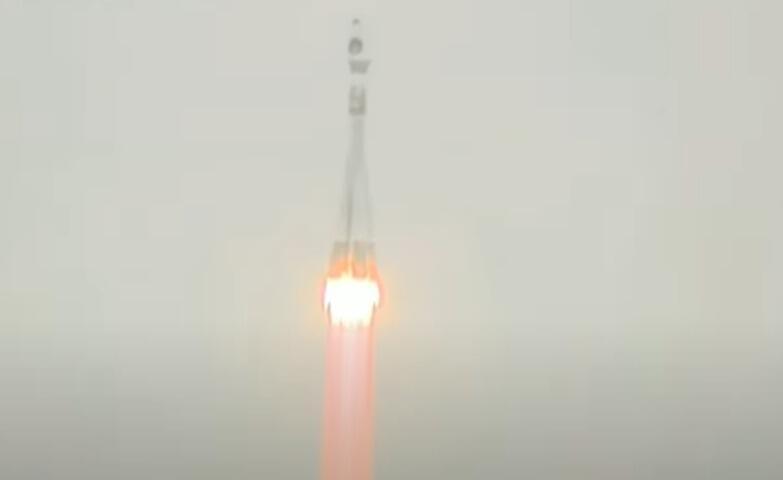Getting your Trinity Audio player ready...
Russia's first moon mission in 47 years failed after its Luna-25 spacecraft spun out of control and smashed into the moon.
Read more:
Russia's state space corporation, Roscosmos, said it had lost contact with the craft shortly after a problem occurred as it was shunted into pre-landing orbit on Saturday.
3 View gallery


Footage taken by Luna-25 a few days before moon collision
(Photo: Reuters, Roscosmos)
"The apparatus moved into an unpredictable orbit and ceased to exist as a result of a collision with the surface of the moon," Roscosmos said in a statement.
Failure for the prestige mission underscores the decline of Russia's space power since the glory days of Cold War competition when Moscow was the first to launch a satellite to orbit the Earth - Sputnik 1, in 1957 - and Soviet cosmonaut Yuri Gagarin became the first man to travel into space in 1961.
3 View gallery


The Earth (in the left circle) and the moon (in the right circle) in a photo taken by the Luna-25 lunar probe making its way to attempt a landing at the south pole of the moon
(Photo: IKI RAS)
Russia has not attempted a moon mission since Luna-24 in 1976, when Leonid Brezhnev ruled the Kremlin. Luna-25 was supposed to execute a soft landing on the south pole of the moon on on Aug. 21, according to Russian space officials.
A Soyuz 2.1 rocket carrying the Luna-25 craft blasted off from the Vostochny cosmodrome, 3,450 miles (5,550 km) east of Moscow, at 2:11am Moscow time on Aug. 11.
The lander was boosted out of Earth's orbit toward the moon a little over an hour later. It entered the moon's orbit on Aug. 16 and was due to attempt a soft landing on Monday.
Russia has been racing against India, whose Chandrayaan-3 spacecraft is scheduled to land on the moon's south pole this week, and more broadly against China and the United States which both have advanced lunar ambitions.
The lunar south pole is of particular interest to scientists, who believe the permanently shadowed polar craters may contain water. The frozen water in the rocks could be transformed by future explorers into air and rocket fuel.
Last preparations for the launch of Luna-25
(Photo: Reuters)
Failure also underscores the pressure on Russia's $2 trillion economy, which has so far withstood what the West casts as the most stringent sanctions ever imposed.
The West says the sanctions have weakened Russia's economy, particularly the high-technology parts of it which often rely on imports. President Vladimir Putin says Russia's economy is showing remarkable strength.
Over the past three decades, Russia has considered various moon missions which were delayed or shelved amid the chaos of the 1991 fall of the Soviet Union and the ensuing economic and political turmoil.
The failure of the 2011 Fobos-Grunt mission to one of the moons of Mars underscored the challenges facing Russia's space program: it could not even exit the Earth's orbit and fell back to Earth, smashing into the Pacific Ocean in 2012.
Eventually, in the early 2010s, Russia settled upon the idea of the Luna-25 mission to the south pole of the moon.





